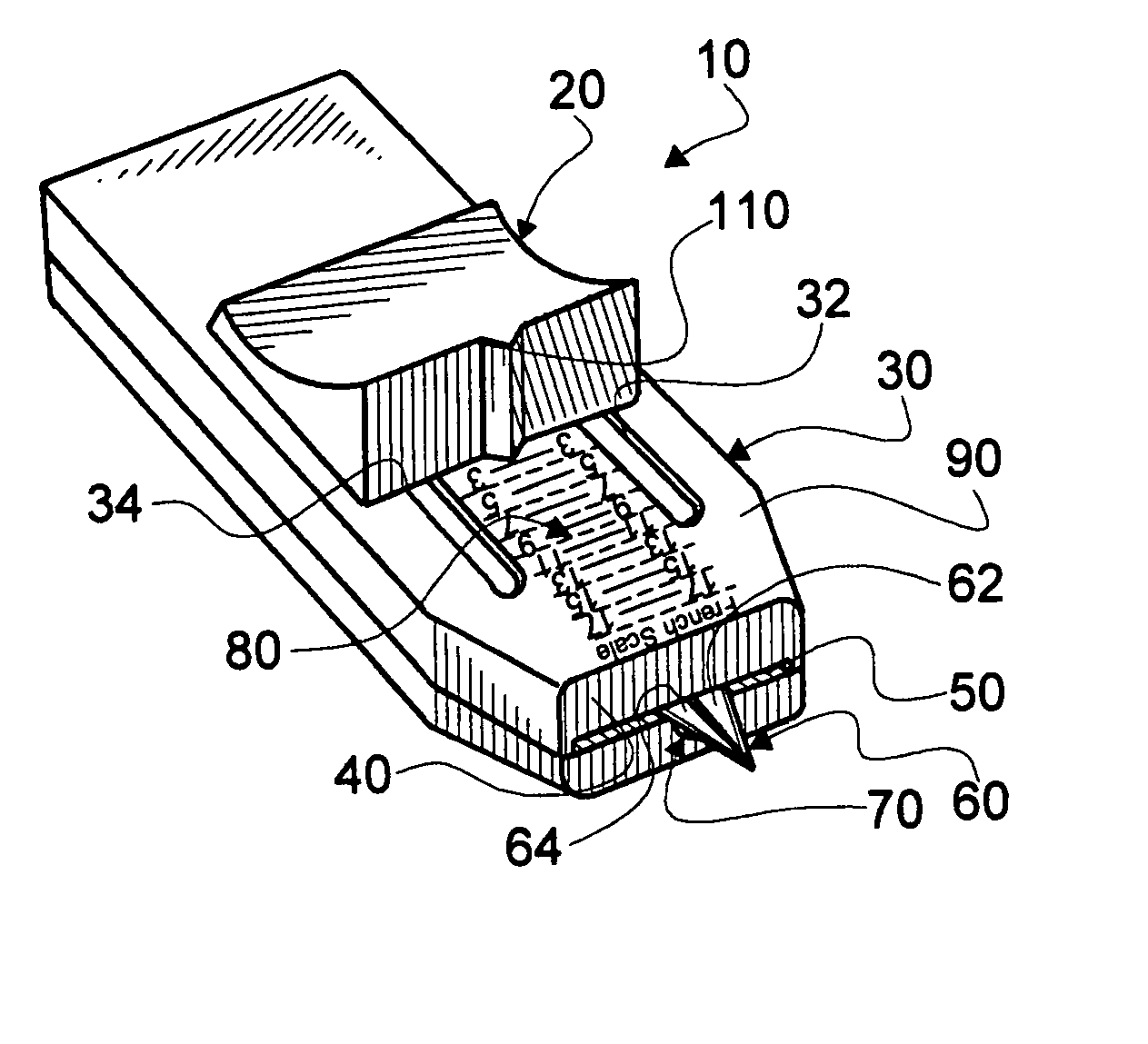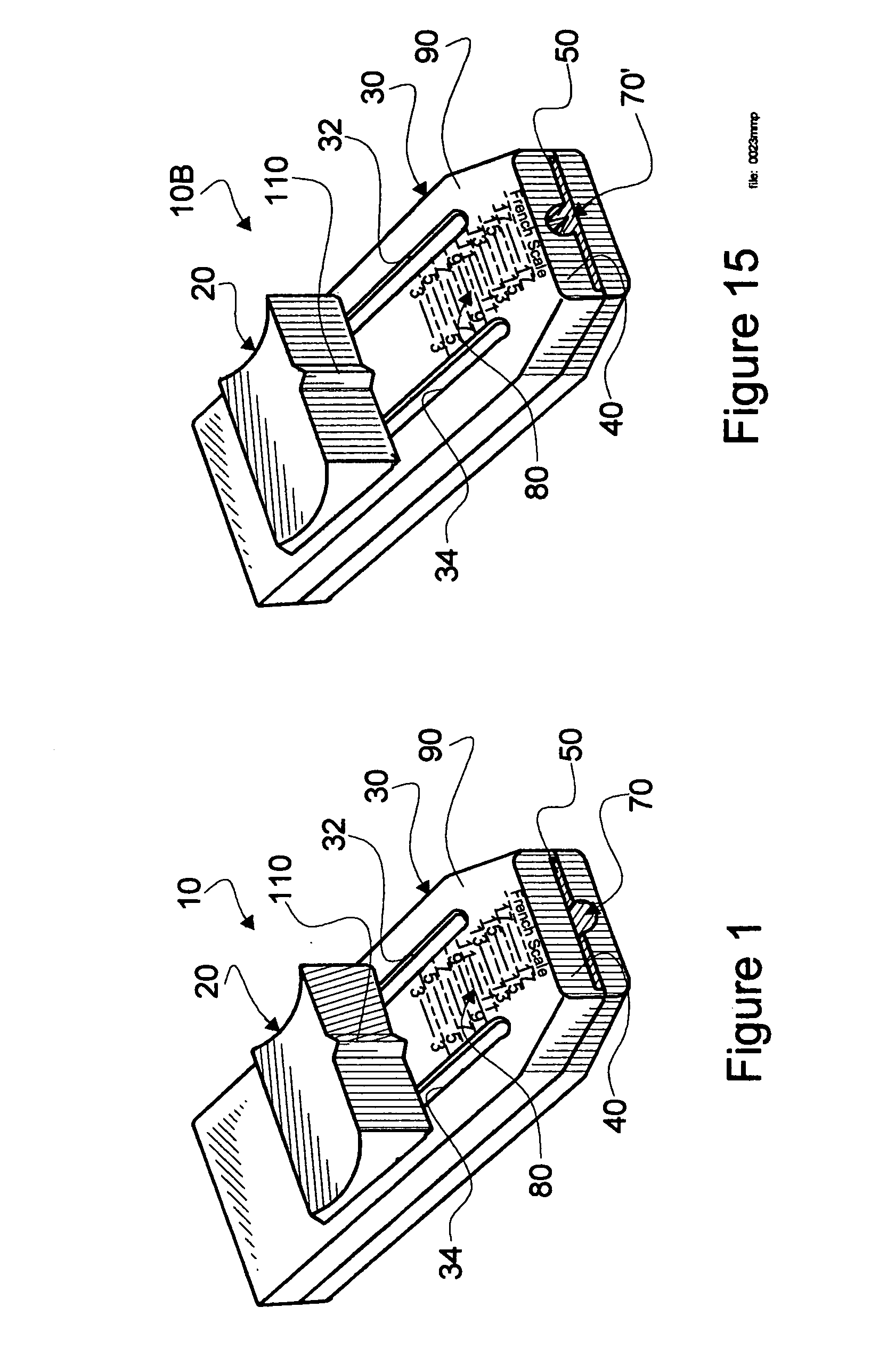Guide-wire steered variable incision width safety scalpel
a scalpel and variable incision technology, applied in the field of percutaneous incision devices, can solve the problems of increased infection risk, vein or even arterial damage with subsequent pain and bleeding, and serious tissue damage, and achieve the effect of limiting the incision width and limiting the scalpel blade separation
- Summary
- Abstract
- Description
- Claims
- Application Information
AI Technical Summary
Benefits of technology
Problems solved by technology
Method used
Image
Examples
Embodiment Construction
[0105] Unless otherwise specified, the term proximal is used to indicate a portion or segment of a referenced device normally facing or near a clinician or other person using the device. The term distal refers to a portion or segment of a referenced device which is generally away from the clinician or other person using the device. Reference is now made to the embodiments illustrated in FIGS. 1-26A wherein like numerals are used to designate like parts throughout. As a number of embodiments are disclosed herein, parts which are similar in form and function are given like numbers, but differentiated one from the others by a unique letter or a prime assigned to the part number. As an example, a part like, but functionally or formed somewhat differently than a part numbered 3 may be assigned the number 3A or the number 3′.
Adjustable Incision Width Scalpel
[0106] Reference is now made to FIGS. 1, 1A and 1B wherein a first embodiment of a guide-wire steered variable incision width scal...
PUM
 Login to View More
Login to View More Abstract
Description
Claims
Application Information
 Login to View More
Login to View More - R&D
- Intellectual Property
- Life Sciences
- Materials
- Tech Scout
- Unparalleled Data Quality
- Higher Quality Content
- 60% Fewer Hallucinations
Browse by: Latest US Patents, China's latest patents, Technical Efficacy Thesaurus, Application Domain, Technology Topic, Popular Technical Reports.
© 2025 PatSnap. All rights reserved.Legal|Privacy policy|Modern Slavery Act Transparency Statement|Sitemap|About US| Contact US: help@patsnap.com



